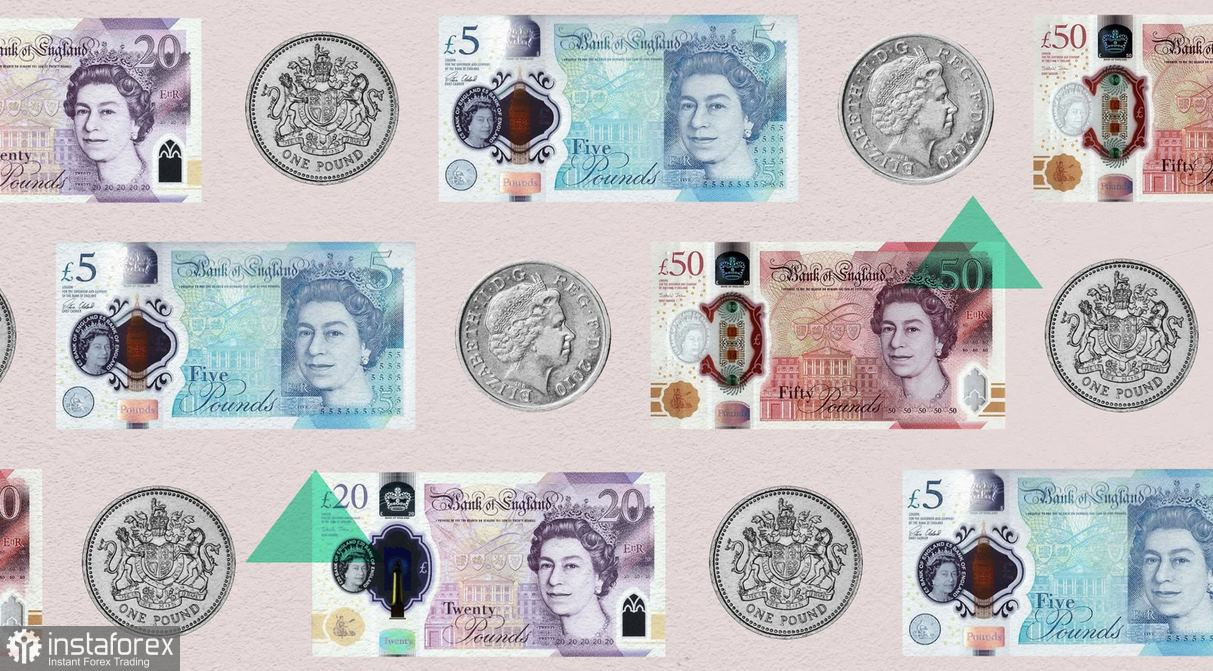The GBP/USD pair shows that it is willing to fight, as it attempts to start a bullish correction. The bulls are not only counting on the greenback's weakness, but are also relying on the UK inflation report. The fact that inflation did not fall as expected made it possible for the bulls to push the pair to the boundaries of the 1.25 mark, although, in my opinion, the pound has no grounds to sustain an upward trend. On the one hand, all components of the inflation data came out in the "green". But on the other hand, inflation in the UK continues to slow.

Therefore, the current rise in GBP/USD should be viewed with a dose of skepticism. Especially since it seems illogical for the greenback to show broad weakness. Most likely, this is a technical correction, as many fundamental factors continue to work in favor of the dollar. For instance, Federal Reserve Chairman Jerome Powell confirmed the assumptions that the central bank will not lower rates in the near future. After his comments, the likelihood of maintaining the status quo at the June meeting increased to 86%. As for the prospects of the May meeting, market participants are 99% confident that the Fed will maintain a wait-and-see position.
In other words, the current fundamental conditions do not support a significant drop in the dollar. Therefore, GBP/USD bulls cannot fully rely on the greenback - sooner or later, the correction will end, and the dollar will pull the pair down again.
As for the latest UK inflation report, here too, "not everything is so straightforward."
The Consumer Price Index (CPI) stood at 3.2% in March, against an expected decline to 3.1%. On the one hand, the indicator was in the "green," but on the other hand, the CPI slowed down again. The reading was the lowest since September 2021. The indicator has been gradually declining since February 2023.
The core CPI, which excludes energy and food prices, dropped to 4.2% in March. Again, most experts expected a more significant decline (to 4.1% on an annual basis). However, firstly, the core CPI has been actively decreasing for the past two months (for comparison: in January, this indicator was at 5.1%), and secondly, the March result set a multi-month low. 4.1% is the weakest growth rate since January 2022.
Another important point that needs to be mentioned separately: as of March, the growth in service prices slowed down. To only a small extent (from 6.1% to 6%), but this is quite important in light of the recent statements from the Bank of England (many central bank members have focused their attention on this component of the inflation report).
The inflation rate for the Retail Price Index (RPI), which employers use when discussing wage issues, decreased to 4.3% on an annual basis, against an expected decline to 4.2%. And here, a similar picture emerges. In fact, the indicator set a multi-year low in March (the lowest growth rate since August 2021). Moreover, the RPI has been consistently decreasing for the past 7 months.
Another inflation indicator, the Producer Price Index (PPI), remained in negative territory both on a monthly (-0.1%) and on an annual basis (-2.5%).
Take note that the UK also released its wage data, reflecting a slowdown in the pace of wage growth excluding bonuses. Thus, average earnings excluding bonuses in the UK grew by 6.0% in February compared to 6.1% in January. This indicator demonstrates a consistent downward trend for six consecutive months.
All this indicates that inflation in the UK continues to slow down, making it possible for the BoE to consider lowering interest rates in the foreseeable future. Currently, there is no consensus on when exactly the central bank will take the first step in this direction. According to most economists surveyed by Sky News, the central bank will cut rates as early as the June meeting. According to some other analysts, the BoE will not rush with this decision until August.
At the end of March, BoE Governor Andrew Bailey has signaled markets are right to expect more than one interest rate cut this year. At the same time, he said he is increasingly confident that inflation is heading towards the Bank's target. In my opinion, the latest inflation report fits into the framework of these expectations. Inflation is consistently decreasing, although not at an accelerated pace.
Thus, the current fundamental background for the GBP/USD pair does not support sustainable and significant price growth. A kind of marker here is the level of 1.2500 (the upper Bollinger Bands line, coinciding with the Kijun-sen line on the 4-hour chart). If buyers do not overcome this resistance level in the short term, sellers may regain the initiative. Bearish targets are located at 1.2400 (the lower Bollinger Bands line on the H4 timeframe) and 1.2350 (the middle Bollinger Bands line on the MN timeframe).





















